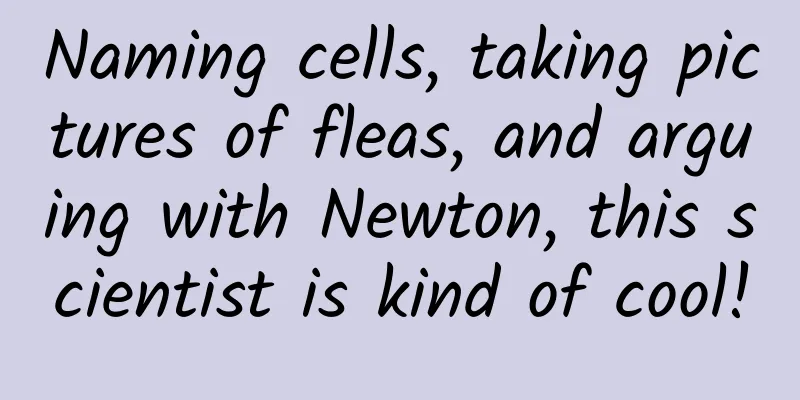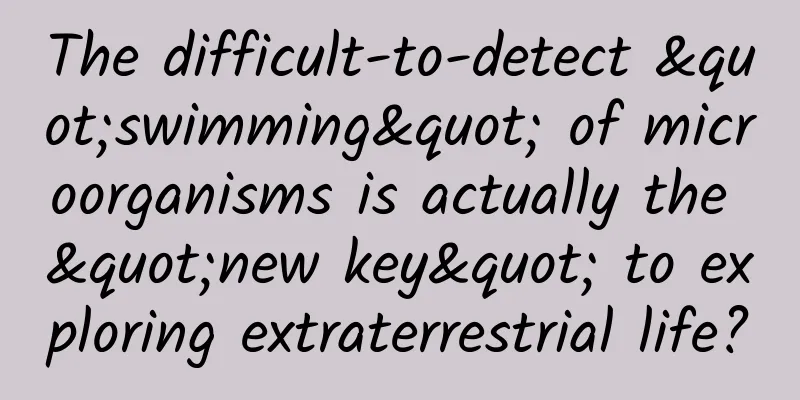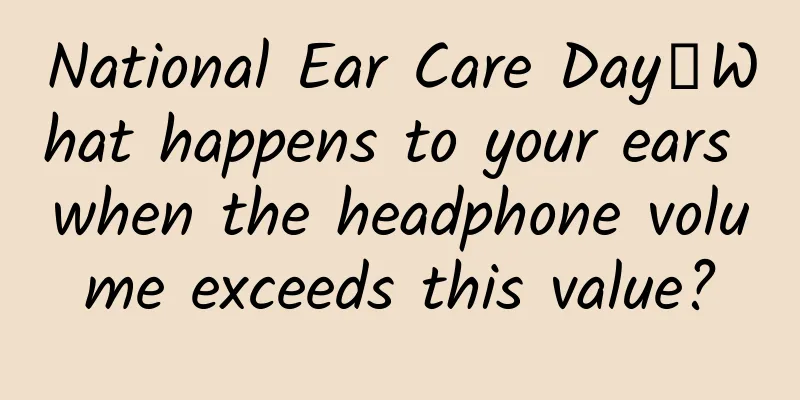Naming cells, taking pictures of fleas, and arguing with Newton, this scientist is kind of cool!

|
Portrait of Hook (from the Internet) Hooke entered Westminster School in London in 1645, and then entered Oxford University, where he was noticed by Boyle and became his assistant. In 1662, Hooke was appointed as the laboratory director of the Royal Society of London. His main task was to prepare several experiments for the Royal Society's meetings for members to observe, discuss, analyze and guess. This position was initially voluntary, but later, with Hooke's outstanding work, the Royal Society of London began to pay him a salary, so Hooke became the first "professional" scientist in Western history to earn money to support his family by doing scientific research. Hooker held this position for 40 years until his death in 1703. Hooke's microscope and Microscopic Atlas In Hooke's time, grinding lenses and making instruments were quite fashionable. Hooke himself was also a very talented instrument maker. He personally designed and made a compound optical microscope with an eyepiece, an objective lens and a stage. The double-lens microscope designed by Hooke (picture from the Internet) Hooke used the microscope he made to look around and carefully observe everything around him. He also drew the tiny details of objects that were invisible to the naked eye. In 1665, he published Micrographia, the first and most influential work in the history of the Royal Society of London. The cover of Hooke's Micrographia, published in 1665, features the Royal Society's arms and its motto, "Take no man's word for it". Hooke was not the first person to draw microscopic images, but publishing a book was a very luxurious thing in those days, and most of the results of early people's observations and drawings under the microscope were only preserved in the form of manuscripts. Hooke's microscope in "Microscopic Atlas" The subject matter of Microscopic Atlas is very wide, with a total of 66 topics, including crystals, fossils, fungi and various insects. It can be said that Hooke drew everything he encountered in life. There are 6 illustrations in the book as fold-out pictures, and the largest one is a flea. Once this flea illustration was published, it caused a sensation in Britain. From ordinary people to princes and nobles, everyone was shocked. It turned out that the insect that bit them every day actually looked like this. The illustration of a flea in Hooke's book is also the first photo of a flea in human history. The word "cell" was used for the first time in the book Microscopic Atlas. Hooke once scraped a thin slice from a piece of cork and observed it under a microscope. He saw many small "enclosed rooms" that looked like a beehive, so he called it Cell. Later, the Japanese and Chinese translated this word as "cell". Hooke's view was basically correct, but these small rooms were not real biological cells, but cell walls left behind after the cells died. Hooke's microscope on a cork section showing small rooms (cells) Fungi were also put under the microscope by Hooke. He found a leather book with hairs on it and was curious about what the hairs were. He put it under the microscope and found small hyphae growing on the leather. In addition, Hooke found that fungi were the "culprit" that infected and destroyed the leaves of rose plants, causing rust. From such observations, Hooke proposed a theory that when plants or animals decay, "some low and uncomplex" organisms will be produced. This picture is an illustration of the first chapter of human history, Fungi Many of the topics in Microscopic Atlas are related to familiar insects, such as flies, bees, fleas, ants, and lice. Illustration of aphid flies from Microscopic Atlas Hooker's description of human lice in his book is quite humorous: "This thing is so disgusting that we can't avoid it; it is so reckless and overbearing; it is so arrogant and looks down on everything; it lives on the top of the Forbidden City, acts simply and violently, and will not let go of a passerby's ears, and will not stop until it sucks blood." The first nude photo of lice in history All the illustrations in Hooke's book were drawn by him himself. There was no other way because cameras had not been invented in those days. In that era without cameras, drawing was also one of the indispensable skills for scientists. Robert Hooke and Leeuwenhoek Dutch businessman Antony van Leeuwenhoek was a loyal reader of Microscopic Atlas. Inspired by this book, he used a single-lens microscope with a magnification of nearly 300 times that of his own development to immerse himself in the microscopic world, observing, describing and drawing single-celled organisms such as protozoa and bacteria. Due to the similar pronunciation of Hooke and Leeuwenhoek, some domestic books have regarded them as the same person, causing considerable misunderstanding. Hooke was a difficult man. He had a dispute with the Dutch scientist Huygens over the invention of the hairspring watch, and he also had a public dispute with Isaac Newton. Robert Hooke and Isaac Newton's Feud Hooke supported the wave theory of light, while Newton published a paper arguing that light was a particle. The debate between the two was very intense. Hooke believed that some of Newton's views were suspected of plagiarizing his "Micrographs" and wrote a letter to Newton to question him. Newton replied with a sarcastic remark: "What Descartes did was a good step. You have added much several ways...... If I have seen further it is by standing on ye shoulders of Giants. - (About optics) Descartes took a good step forward. You have added much several ways...... If I have seen further it is by standing on ye shoulders of Giants. " In fact, Hooker was a short man and slightly hunchbacked. There is evidence that a lot of basic work on gravity was done by Hooke, but Newton did not admit it. After Hooke died in 1703, Newton disbanded Hooke's laboratory and destroyed all items related to Hooke, and it is said that not even a portrait was left. So who painted the portrait of Hooke we see today? There is no way to know. Natural history and naturalists Hooke made many contributions throughout his life. The scientific research he conducted could be considered as natural history at the time. The English equivalent of natural history is natural history, which is also translated as natural history. From the discovery of the New World during the Age of Exploration to the birth of modern science, Europeans discovered countless new plants, animals, minerals, etc. in the past few hundred years. However, there were no cameras at that time. How could they tell others about the newly discovered species? The only way was to ask artists to draw them, or make specimens and bring them back to the Curio House (and later the museum) for others to see. The general term for knowledge in that era was called natural history. With the accumulation of knowledge and the expansion of people's understanding of the world, this knowledge eventually differentiated into zoology, botany, mineralogy, etc. Over the past few hundred years, many great naturalists have emerged. Their stories are extremely fascinating, and their natural history works are extremely worth reading and collecting. |
<<: There are so many types of winter clothes, why do we love down jackets the most?
Recommend
From 0 to 100,000+, a practical review of the entire process of B2B community operation
For B-side customer acquisition, the WeChat ecosy...
Essential information for APP promotion and operation: the most comprehensive and complete online event planning guidance program!
Event operation is an explosive operation method ...
3 major challenges in acquiring new customers!
First of all, why do we need to do customer acqui...
2011-2016, what can we find from the best of Apple AppStore?
Apple AppStore has just announced the results of ...
Uncovering the secrets of Asia’s “water tower”: majestic yet fragile
Your browser does not support the video tag The Q...
Japanese advertising is really worth learning
When talking about Japan, the first thing that co...
Artificial Intelligence: Driving China's Economic Growth (Chinese version)
The report, titled "Artificial Intelligence:...
Do you have dry eyes and feel tired all the time? Do you know what nutrients are needed to protect your eyes?
No. 211 Don't be a muddy world In today's...
Toco - the most beautiful cub on the Amazon River
I went to the zoo last week. I wanted to see the ...
Summary from a senior front-end developer: What do we need for “front-end” development?
I always think that "tools" are the mos...
What the hell, can I get a passport and take a plane in the UAE?
If you haven't been paying attention to the 2...
Jack Ma couldn't stand it anymore and used Alipay to park and refuel Citroen C3 AIRCROSS
In 2017, the sales of Dongfeng Peugeot Citroen Au...
Why do we still rely on TV to watch the World Cup?
The 2014 World Cup in Brazil ended an hour ago. Ge...
"League of Holy Sword" Review: A hodgepodge of games with all kinds of flavors
With the emergence of the new fertile soil of tel...
Activity operation plan planning process
The activity planning process is divided into the...









